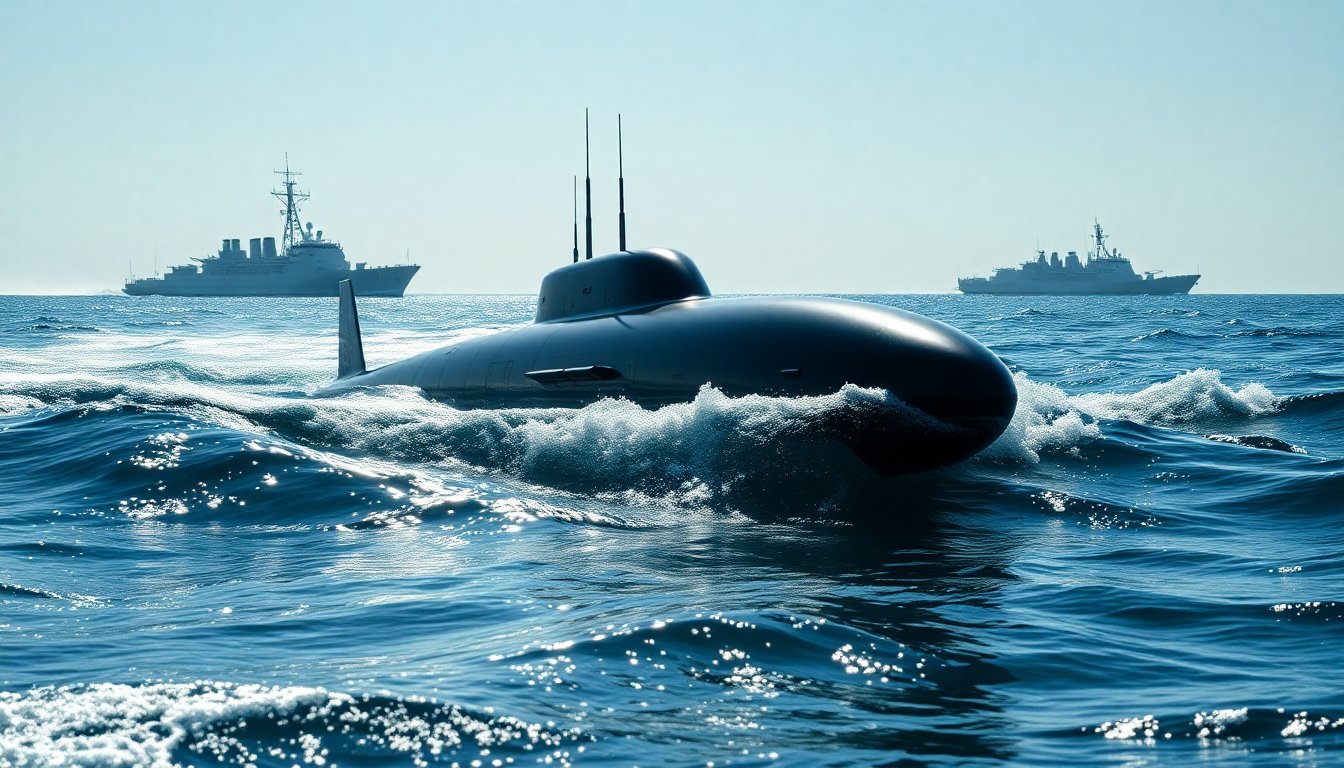Table of Contents
The landscape of naval warfare is undergoing a remarkable evolution with the advent of advanced unmanned submersibles. These cutting-edge vessels feature zero-radius turning manoeuvrability, enabling them to navigate complex maritime environments with remarkable agility. This capability is essential for contemporary military operations, where stealthy maneuvering can significantly influence the outcome of a conflict.
An article published in a recent journal by expert Tang Yi highlights that these unmanned systems operate at sound levels below 90 decibels. This low noise level is a critical advantage, as it allows them to avoid detection by enemy sonar systems, thereby enhancing their stealth and operational efficiency.
Integration of advanced technologies
One of the remarkable aspects of these unmanned submersibles is their ability to integrate seamlessly with various military hardware. As highlighted by Yi, they can be paired with submarine-launched missiles, smart mines, and even mother-daughter unmanned underwater vehicles. This integration forms a multilayered strike network, enhancing the overall strike capabilities of naval forces.
Enhancing military strategy
The formation of such an interconnected system enables military strategists to execute complex operations with greater precision. Each component of this network communicates and collaborates, creating a formidable presence in the underwater domain. This capability allows naval forces to respond swiftly to emerging threats while remaining hidden from enemy detection.
Recent advancements in unmanned naval technologies
During a recent showcase, the People’s Liberation Army (PLA) Navy presented a range of advanced unmanned submersibles, surface vessels, and systems designed for autonomous mine-laying. These innovations signal a notable shift in modern naval warfare, emphasizing the use of unmanned technologies capable of operating in hazardous environments.
The deployment of these systems marks a significant advancement in naval capabilities. These unmanned vehicles can perform reconnaissance, surveillance, and combat missions, thereby reducing the risks posed to human personnel.
Implications for future naval warfare
Revolutionizing naval combat with unmanned technology
The implications of recent technological advancements in naval warfare are significant. As countries invest heavily in unmanned naval capabilities, traditional strategies may require reassessment to adapt to these emerging realities. The integration of unmanned systems not only improves operational efficiency but also introduces new challenges for naval forces.
Unmanned submersibles are capable of operating undetected while executing complex missions. This ability could fundamentally reshape the balance of power in naval combat. Their deployment is likely to inspire new tactics that leverage their distinct capabilities, which may change the dynamics of conflict at sea.
The rise of unmanned submersibles marks a significant shift in naval operations. Their enhanced maneuverability and stealth capabilities are redefining strategies in maritime warfare. These technologies integrate seamlessly with existing military systems, making them vital for future naval superiority. As these unmanned systems continue to develop, their role in navigating complex and contested waters will only grow more critical.


